In the part of a circuit shown in fig. 5.266, the potential difference (VG−VH) between points G and H will be
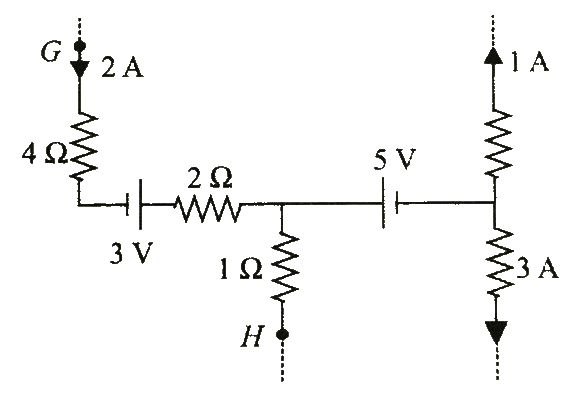
0 V
15 V
7 V
3 V
The correct Answer is:C
Current through 1Ω resistance will be 2 A in the upward
direction
VG−2×4+3−2×2+2×1=VHorVG−VH=7V
Topper's Solved these Questions
- ELECTRIC CURRENT AND CIRCUITBOOK - CENGAGE PHYSICS ENGLISHCHAPTER - ELECTRIC CURRENT AND CIRCUITEXERCISE - Multiple Correct
16 Videos
- ELECTRIC CURRENT AND CIRCUITBOOK - CENGAGE PHYSICS ENGLISHCHAPTER - ELECTRIC CURRENT AND CIRCUITEXERCISE - Comprehension
35 Videos
- ELECTRIC CURRENT AND CIRCUITBOOK - CENGAGE PHYSICS ENGLISHCHAPTER - ELECTRIC CURRENT AND CIRCUITEXERCISE - Subjective
29 Videos
- ELECTRIC CURRENT & CIRCUITSBOOK - CENGAGE PHYSICS ENGLISHCHAPTER - ELECTRIC CURRENT & CIRCUITSEXERCISE - Kirchhoff s law and simple circuits
15 Videos
- ELECTRIC FLUX AND GAUSS LAWBOOK - CENGAGE PHYSICS ENGLISHCHAPTER - ELECTRIC FLUX AND GAUSS LAWEXERCISE - MCQ s
38 Videos
Similar Questions
In the part of a circuit shown in figure, the potential different
(VG−VH) between points G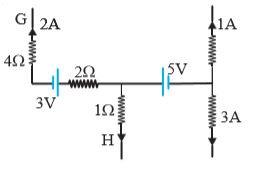
View SolutionThe potential difference (VA−VB) between the point A and B in the given figure is

View SolutionThe potential difference (VA−VB) between the point A and B in the given figure is

View SolutionFind the potential difference (inV) between points A and B shown in the circuit.
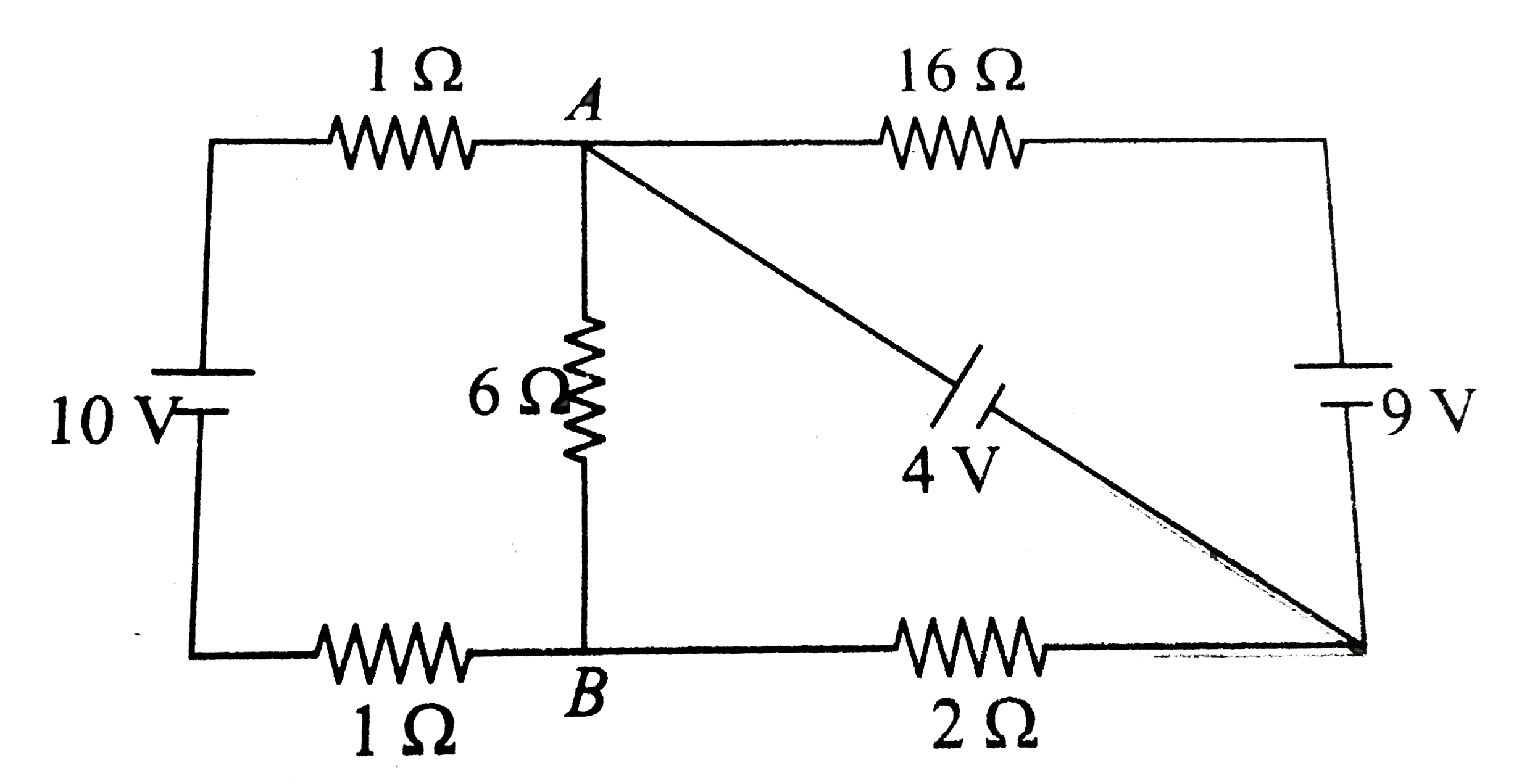
View SolutionFind the potential difference Va−Vb between the points a and b shown in each part of the figure.
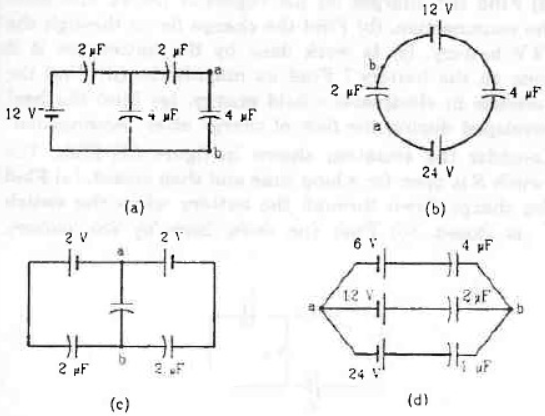
View SolutionIn the circuit shown, what is the potential different VPQ ?
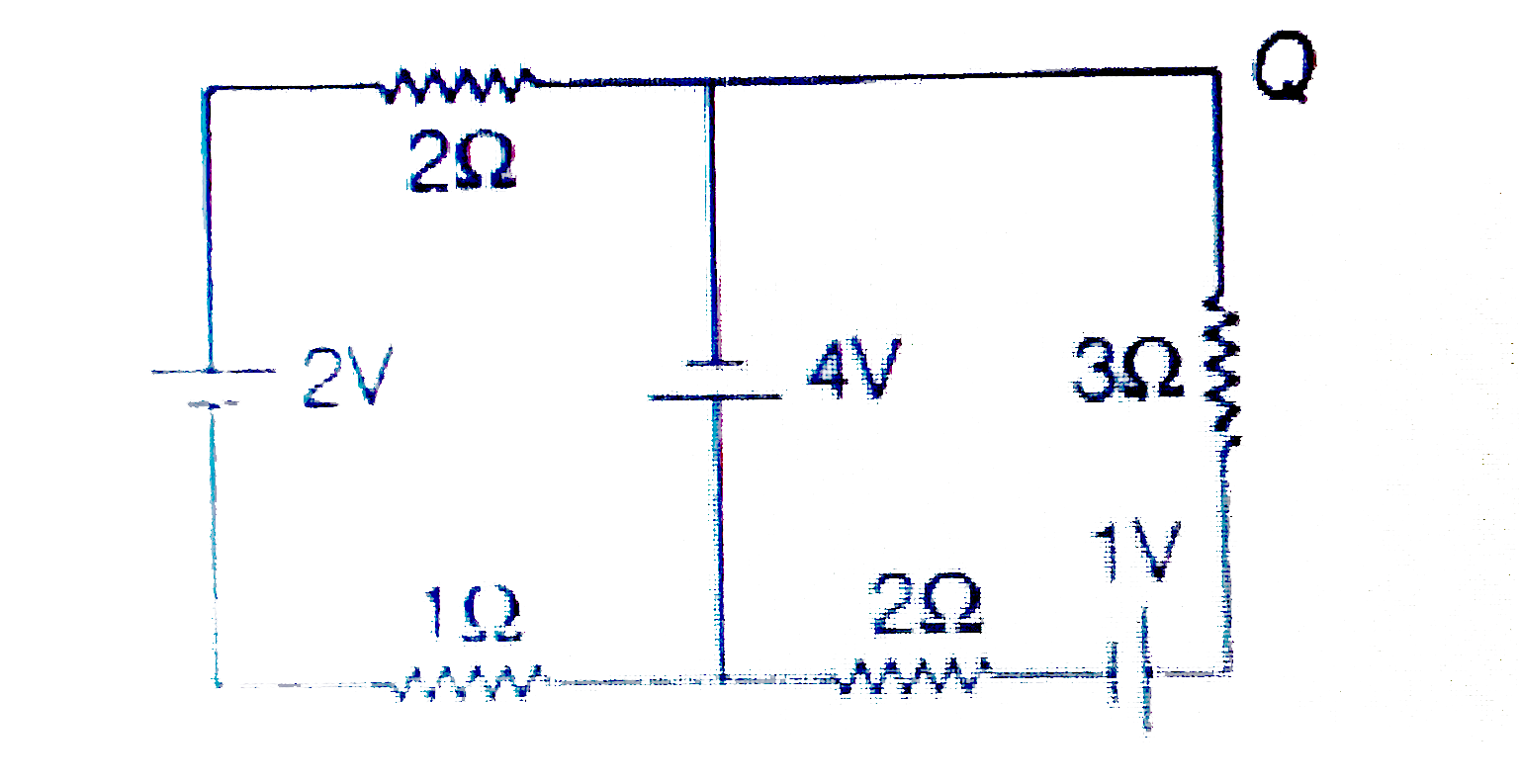
View SolutionFind the potential differnce VA−VB between points A and B of the circuit shown in.
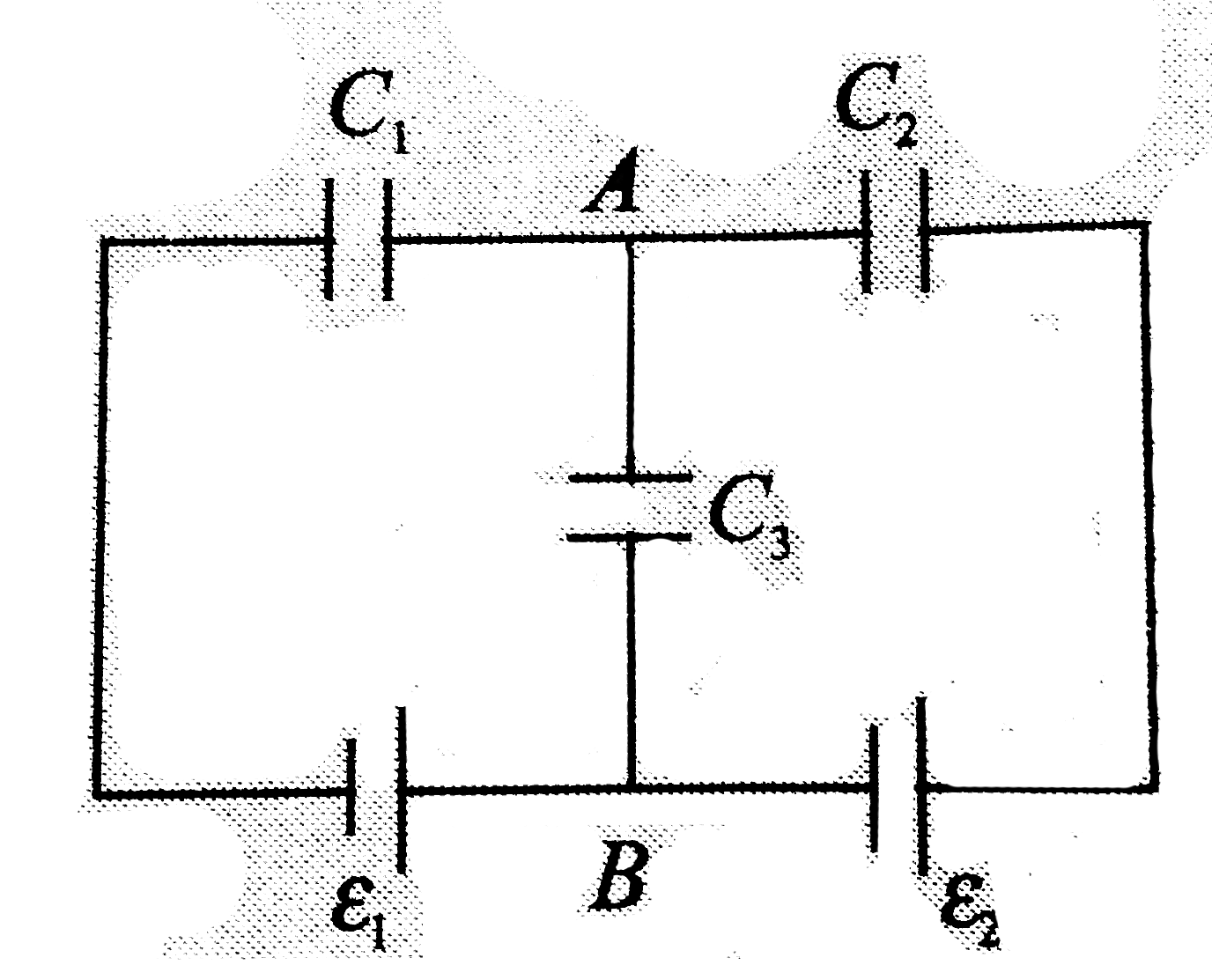 .
.
View SolutionIn given circuit , the potential difference between points A and B is
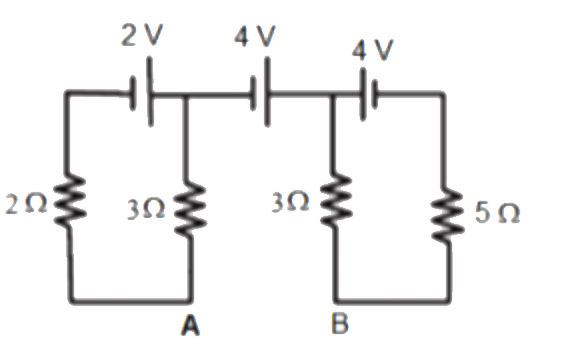
View SolutionFind the potential difference Va−Vb between the points (1) and (2) shown in each part of Fig.
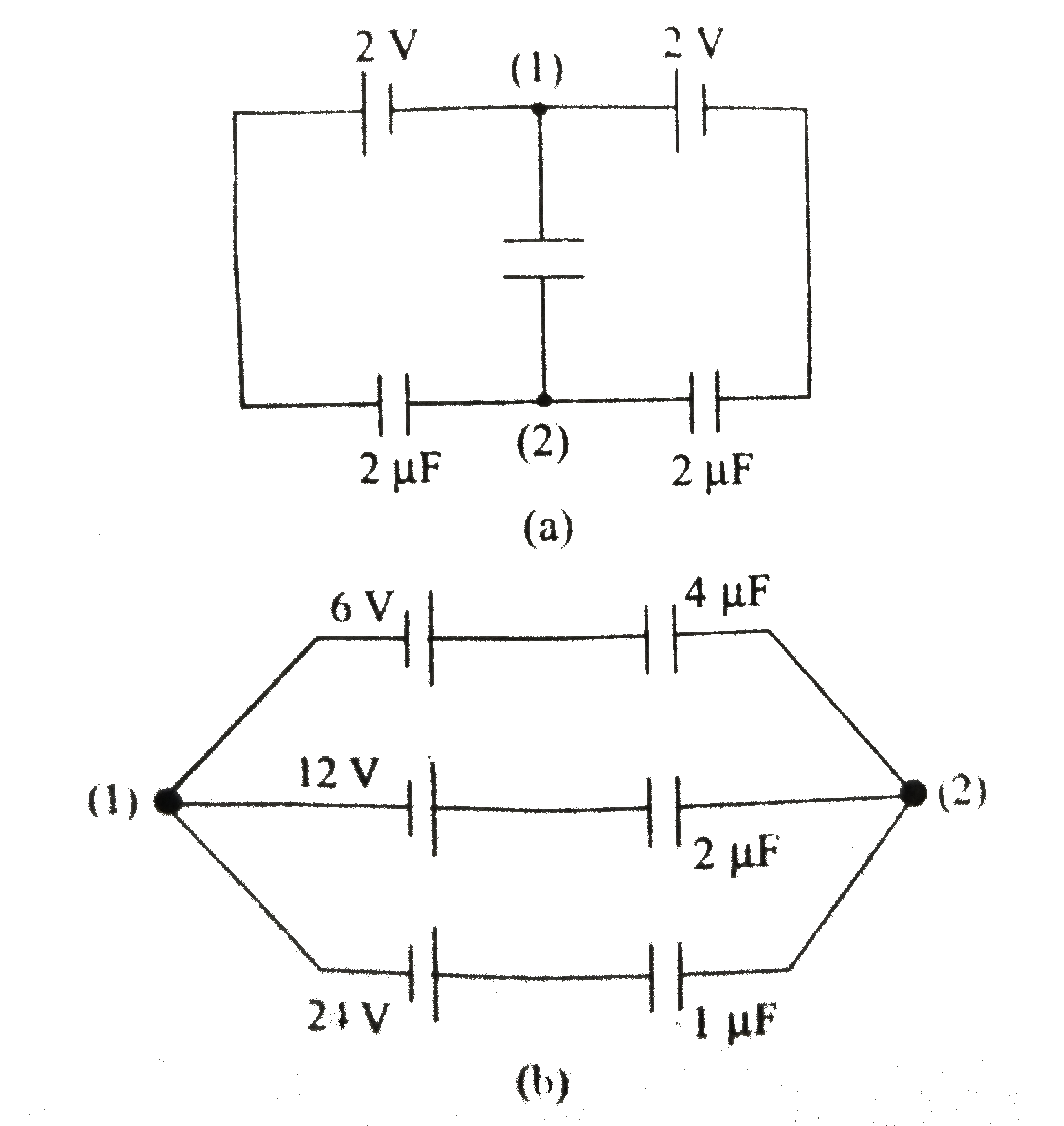
View Solution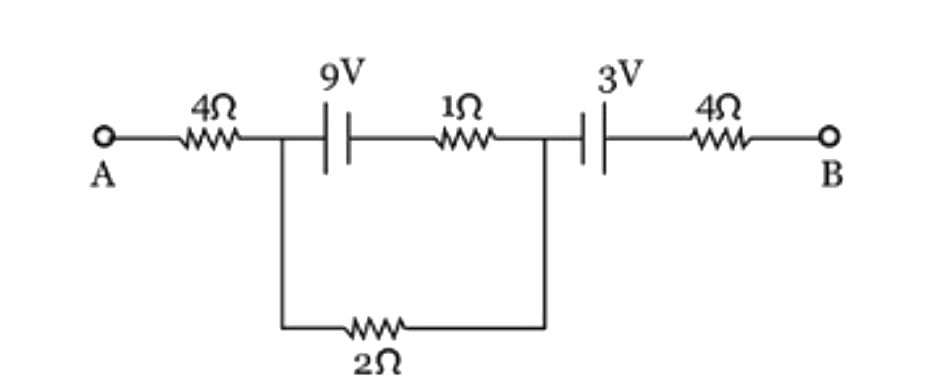
In the part of the circuit shown in the figure, the potential difference between points VA−VB=16V. The current passing through the 2Ω resistance will be
View Solution
